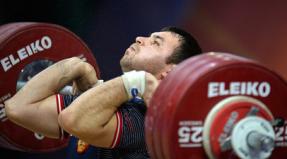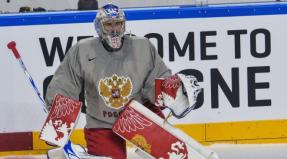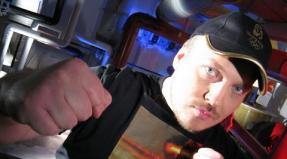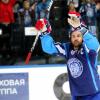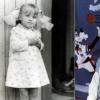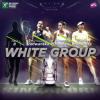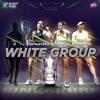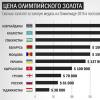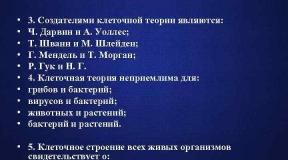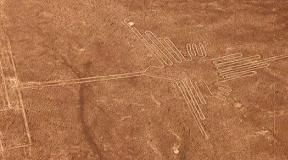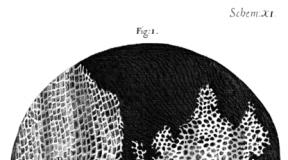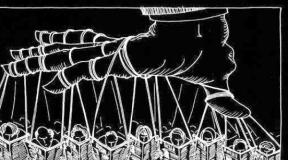Quests in the form of a civil war exam. Transition to a new economic policy. formation of the ussr. choice of ways of combining
Explanatory note.
The presented option test work history was developed within the framework of the requirements and taking into account the project structure Demo version control measuring materials of the 2016 unified state exam in history, published on the FIPI website. The test contains questions from the first section of the codifier of content elements and requirements for the level of training of graduates educational organizations to conduct a unified state examination in history - "Man and Society".When drawing up the test, all structural requirements of the Project Demo-2016 were taken into account .
When compiling the test, materials from the sites were used
1.http: //hist.xn--c1ada6bq3a2b.xn--p1ai/? Redir = 1 "I will solve the exam": history, educational portal D. Gushchin.
2. ... Federal Institute for Pedagogical Measurements.
3. ... OFFICIAL INFORMATION PORTAL OF THE UNIFIED STATE EXAMINATION.
History, grade 11
Part 1 Answers to tasks 1–19 are a sequence of numbers or a word (phrase). First, indicate the answers in the text of the work, and then transfer them to ANSWER FORM No. 1 to the right of the number of the corresponding task, starting from the first cell, without spaces, commas and other additional characters. Write each number or letter in a separate box in accordance with the samples given in the form. The names of Russian sovereigns should be written only in letters (for example: Nicholas II).
1.Place in chronological order historical events... Write down the numbers that indicate historical events in the correct sequence in the table.
Evacuation of Japanese troops from Vladivostok, abolition of the Far Eastern Republic.
Declaration of Russia as a republic, formal liquidation of the monarchy.
Peace of Versailles.
Answer:
2. Establish a correspondence between the revolutionary events in Russia and their dates.
Answer:
3. Below is a list of surnames. All of them, with the exception of two, belong to the leaders of the White movement in Russia in the period 1917-1922.
1. A.I.Denikin. 2.L.D. Trotsky. 3. N.N. Yudenich. 4. A. V. Kolchak. 5. A.A. Brusilov. 6.P.N. Wrangel.
Find and write down the serial numbers of the names of generals who do not belong to the specified political movement.
Answer:
4. Write down the term in question.
The international organization that united the communist parties of various countries, created in 1919 and disbanded in 1943, was called the Communist _______________________.
Answer: ______________________
5. Establish a correspondence between the processes (phenomena, events) and the facts related to these processes (phenomena, events): for each position of the first column, select the corresponding position from the second column.
Answer:
6. Establish a correspondence between fragments of historical sources and their brief characteristics: for each fragment indicated by a letter, select two corresponding characteristics indicated by numbers.
Germany, Austria-Hungary, Bulgaria and Turkey on the one hand and Russia on the other declare that the state of war between them has ended ...Russia will immediately carry out a complete demobilization of its army .... Russia pledges to immediately conclude peace with and to recognize a peace treaty between that state and the powers of the quadruple alliance. The territory of Ukraine is immediately cleared of Russian troops ...
Estland and Livonia are also immediately cleared of Russian troops ... Estland and Livonia will be occupied by the German police power until ... until state order is restored there.
Finland and the Aland Islands will also be immediately cleared of Russian troops and Russian Red Guards ...
B)
The German Government, ... ... and the Government of the Russian Socialist Federative Soviet Republic, ... have agreed on the following decisions: Both Governments agree that the disagreements between Germany and the Russian Soviet Republic on issues that have arisen during the state of these states in war are regulated on the following grounds:
The German state and the RSFSR mutually refuse to reimburse their military expenses ...
Diplomatic and consular relations between Germany and the RSFSR are immediately resumed.
Both Governments further agree that for a common legal status citizens of one country on the territory of another and for the general settlement of mutual trade and economic relations, must act .
SPECIFICATIONS
1) This agreement was signed in Rapallo.
2) In accordance with this treaty, Russia withdrew from the number of participants in the First World War.
3) This agreement was signed in Moscow.
4) By 1922, all the territories mentioned in the treaty retained political sovereignty.
5) This treaty contained secret articles providing for military-technical cooperation between Germany and Russia.
6) Opponents of the signing of this treaty were representatives of the Left Socialist Revolutionary Party and a group of "Left Communists".
Answer:
7. Which three of the listed phenomena are related to "war communism"? Write down the corresponding numbers in the answer.
1) rental of small and medium-sized enterprises
2) surplus
3) universal labor service
4) concessions to foreign entrepreneurs
5) free utilities
6) broad cooperative movement
Answer:
8. Fill in the blanks in these sentences using the list of missing items below: for each letter and blank sentence, select the item number you want.
A) ______________ the world that ended the Soviet-Polish war of 1920.
B) One of the leaders of the White movement, Admiral _____________, in November 1918 took the title of "supreme ruler of the Russian state."
C) The anti-Bolshevik organization KOMUCH, created by the Social Revolutionaries from the members of the Constituent Assembly of Russia, was created in the city of ___________
Missing items:
1) Riga
2) Brestsky
3) Rostov-on-Don
4) L.G. Kornilov
5) A. V. Kolchak
6) Samara
Write down the selected numbers in the table under the corresponding letters.
Answer:
9. Establish a correspondence between the events and the participants in these events: for each position of the first column, select the corresponding position from the second column.
Answer:
10. Read the flashback passage and write the last name missing in the text.
“I remember that in early May Mikha Tskhakaya and Philip Makharadze arrived from Petrograd. They participated in the VII (April) All-Russian Party Conference of the Bolsheviks, held under the leadership of ______________. Mikha Tskhakaya told us in detail how the departure from Switzerland of _____________ and a group of Bolsheviks, which included Mikha Tskhakaya himself, was organized.
Tskhakaia told us in detail how they met ______________ in Petrograd, at the Finlyandsky railway station, about his first speeches, talked about the meaning of [his] April theses of _____________, which had already been published in print by that time. "
Answer: _________________________
11. Fill in the blank cells of the table using the list of missing elements below: for each gap indicated by a letter, select the number of the required element.
Missing items:
A.I. Egorov. J.V. Stalin.
The defeat of the army of P.N. Wrangel in the Crimea.
May 1918
March 1921
November 1918
M.N. Tukhachevsky, A.I.Sedyakin, P.E. Dybenko.
V.K.Blyukher, I.P. Uborevich.
The defeat of the armies of A.I. Denikin near Orel and Kursk.
August 1920
Answer:
12. Read an excerpt from an essay by a theoretician of one of the revolutionary movements.
“The February Revolution is considered a democratic revolution in the true sense of the word. Politically, it developed under the leadership of two democratic parties: the Socialist Revolutionaries and the Mensheviks. Return to "covenants" February revolution is now the official dogma of the so-called democracy ... Moreover, both democratic parties have enjoyed considerable leisure for more than thirteen years, and each of them has a staff of writers who, in any case, cannot be denied experience. And yet we do not have a single noteworthy work by democrats on the democratic revolution. The leaders of the compromising parties clearly do not dare to restore the course of the development of the February Revolution, in which they had the opportunity to play such a prominent role. Isn't it amazing? No, it’s quite normal. The leaders of vulgar democracy are the more wary of the actual February revolution, the more boldly they swear by its ethereal behests. The fact that they themselves occupied leading positions for several months makes them turn their eyes away from the events of that time. For the deplorable role of the Mensheviks and Socialist-Revolutionaries reflected not just the personal weakness of the leaders, but the historical degeneration of vulgar democracy and the doom of the February revolution as a democratic one. "
Using the passage and knowledge of history, select three correct judgments from the list below.
1) The leader of one of the parties named in the passage was P.N. Milyukov.
2) This passage was written in the period 1920-1925.
5) The revolution in question led to a change in the form of government in Russia.
6) The parties named in the passage were liberal and consisted mainly of representatives of the big and middle bourgeoisie.
Using the passage and knowledge of history, select three correct judgments from the list below. Write down the numbers under which they are indicated in the table.
Answer:
Review the diagram and complete tasks 13-16.
13. Indicate the name of the commander-in-chief of the White Guard troops that have reached the line marked on the diagram with the number "2".
14. Write the missing word: "The events indicated in the diagram took place in nineteen hundred _______."
Answer: ___________________________.
15. Indicate the name of the city marked with the number "1" and which was the target of the campaign of the White Guard troops, whose actions are shown in the diagram.
Answer: ___________________________.
16. What judgments regarding the events indicated in the diagram are correct? Choose three judgments from the six suggested.
Write down the numbers under which they are indicated in the table.
The commander-in-chief of the White Army, whose actions are indicated in the diagram, had the title of the Supreme Ruler of Russia.
In the course of subsequent events, which occurred immediately after those indicated in the diagram, the White managed to capture the city of Tula.
The army of N.P. Makhno.
After the defeat of the White Guard troops, whose actions are indicated in the diagram, their commander emigrated from Russia.
During the events indicated in the diagram, the Bolsheviks pursued a new economic policy.
The White Guard army, whose actions are indicated in the diagram, received weapons and ammunition from the Entente countries.
Answer:
17. Establish a correspondence between cultural figures and the facts of their biography: for each position of the first column, select the corresponding position from the second column.
Answer:
Look at the image and complete tasks 18, 19.

18. What judgments about this image are correct? Choose two judgments from the five suggested. Write down the numbers under which they are indicated in the table.
1) The postage stamp depicts an event that occurred in 1914.
2) The speech of V.I.Lenin depicted on the stamp took place at the II All-Russian Congress of Soviets.
3) The stamp was issued during the leadership of I.V. Stalin.
4) The stamp was issued on the centenary of the birth of V.I.Lenin.
5) One of the results of the event depicted on the stamp was the creation of the Council of People's Commissars.
Answer:
19. Which of the following historical figures was a contemporary of the event depicted on the stamp above? In the answer, write down the two numbers under which they are indicated.
Answer:
Part 2
Use ANSWER FORM No. 2 to record the answers to the tasks in this part (20–25). First write down the task number (20, 21, etc.), and then the detailed answer to it. Write down the answers clearly and legibly.
Read the passage from the history source and briefly answer questions 20-22. The answers assume the use of information from the source, as well as the application of historical knowledge at the rate of history of the corresponding period.
Read the passage from the history source and briefly answer questions C1 – C3. The answers assume the use of information from the clarifier, as well as the application of historical knowledge in the course of history of the corresponding period.
From a letter to V.A. Maklakov.
“Dear Ivan Ivanovich. It was with great pleasure that I read your brilliant article about Guchkov ... You see a paradox in his figure: Guchkov passionately loved Russia and hated what Russia loved, that is, the sovereign. In this you see the fatal mistake of his life. How could even a bad sovereign be overthrown? It was necessary to realize that "the mystics that surrounded the historical tsarist power could not be created in a few months."
All this is true, but the reproach is not the right address. Guchkov understood this well; and it was not he who sought to overthrow the tsarist power in Russia. If he turned out to be touched by the palace conspiracy, it was out of loyalty to the monarchy. At that time there was a saying throughout St. Petersburg: "to save the monarchy, you must kill the monarch."<…>After all, Russia knew examples of how the deposition and murder of tsars led to a better reign ... Guchkov looked at [the sovereign] in this way when, in recent months, he completely fell under the influence of the empress and Rasputin.
You don't look at [the sovereign] that way, but it's a moot point. The tragedy of his fate, his behavior in recent months were reconciled with him. You are even right that, had it not been for a catastrophe, his reign could have been brilliant. Under him, a constitution would have been introduced and an outlet to the Mediterranean would have been opened; but all this could be achieved only apart from him and in spite of him. There was nothing good from him himself. Fate sent him two great people - Witte and Stolypin, he interfered with them and envied them with petty and not royal envy; they overshadowed him. I agree that the tsarist power in general moved Russia forward, but it was the tsar’s power in the aggregate, and not the power of each hotel monarch, some pushed it back. ”
20. Name the sovereign referred to in the text. Indicate the years of his reign. What events ended this reign?
21. How does the author of the letter assess the role of the sovereign referred to in the text in the development of the Russian monarchy? What personal traits, actions, deeds of the sovereign are cited by the author of the letter to argue his position? Indicate at least two arguments given to the authors in support of their assessment.
22. Drawing on hysterical knowledge, indicate at least three reasons for the "catastrophe" referred to in the text, except for the reasons indicated by the author of the letter.
23. During the First World War, which was difficult for Russia, the idea arose of concluding a separate peace with the Germans. Nicholas II flatly refused to negotiate about this. But the Bolsheviks who came to power led by V.I. Why did V. I. Lenin go for something that Nicholas II did not agree to do? Give three explanations.
24. In historical science there are controversial issues on which different, often contradictory, points of view are expressed. Below is one of the controversial points of view that exist in historical science.
"The victory of the" red "is explained not by their strength, but by the weakness and mistakes of their opponents."
Using historical knowledge, give two arguments that can support this point of view, and two arguments that can refute it.
Write down your answer as follows. Arguments in support:
1)...
2)...
Arguments in rebuttal:
1)...
2)...
25. You need to write historical essay about ONE of the periods of the history of Russia: 1) 1917-1922; 2) February 1917 - October 1917; 3) October 1917-1922 The essay must: - indicate at least two significant events (phenomena, processes) related to a given period of history; - name two historical personalities whose activities are associated with the specified events (phenomena, processes), and, using knowledge of historical facts, characterize the role of the individuals you named in these events (phenomena, processes); - indicate at least two causal relationships that existed between events (phenomena, processes) within a given period of history. Using knowledge of historical facts and (or) opinions of historians, give one assessment of the significance of this period for the history of Russia. In the course of the presentation, it is necessary to correctly use historical terms, concepts related to this period.
The theme of the Civil War in Russia, which took place in 1917 - 1922, had a significant impact on the entire subsequent history of our country. Actually, there was a peculiar civilizational choice... At the same time, this topic is extremely complex and controversial. All the exam tasks that test it are overwhelmed by graduates, and there are reasons for this: ignorance of the main programmatic provisions of the acting parties, not knowing these parties themselves, confusion in dates and events.
After reading this article, you can seriously put everything in its place in your head. Well, and the table attached at the end should, in general, play a key role in preparing for the exam in history on this topic.
The concept of "Civil War"
Civil war is an organized armed struggle for state power between classes and social groups within a country. As a rule, signs of civil war include: two or more centers of power, the availability of these centers with the means for conducting an armed struggle. Let me emphasize that these centers are fighting precisely for state power.
As of the date of the beginning of this event, there is no consensus in the history of Russia in the history of Russia. I will tell you the main ones and argue about them.
First point of view: the civil war began in Russia in February 1917, when power passed to the Provisional Government, against which there were both peaceful and armed uprisings (the April crisis, the June, July, Kornilov revolt, etc.).
Second point of view: the civil war began with the seizure of power by the Bolsheviks in October 1917. The Bolsheviks carried out the first revolutionary transformations, in January they convened the Constituent Assembly, which never convened the Provisional Government.

The liquor store was destroyed. Artist Ivan Vladimirov (1869 - 1947)
By the way, all parties, including the moderates, were invited to this meeting. He was asked to recognize the innovations formalized in the Declaration of the Rights of the Working and Exploited People. The Constituent Assembly refused to do this, and was dissolved, or rather dispersed. Many researchers associate the fact that the meeting was dispersed in January 1918 with the beginning of this war.
The third point of view: the civil war in Russia began in 1918, so it was in this year that the white movement consolidated and began to represent a real rival in the struggle for power.
Actually, in textbooks the third point of view prevails (that is, dominates). So the main dating is from 1917/1918 to 1922.
Causes of the Civil War in Russia
- The seizure of power by the Bolsheviks in October 1917. The seizure of power was not peaceful and not legal (that is, illegal), but as is clear from subsequent events, legitimate (that is, supported by the people). As a result, other political parties were no longer able to influence state policy and, in general, after the dispersal of the Constituent Assembly, they were outlawed.
- The dispersal of the constituent assembly gave rise to the White movement to consolidate on the basis that only this assembly can decide the future of Russia. The Bolshevik Party alone cannot do this.
- The inability of the bourgeois Provisional Government (Cadets, Octobrists) to use power to solve the vital problems of the state: to resolve the issue of land, peace, and so on. On the contrary, the Provisional Government was in favor of continuing the unpopular war with the countries of the Triple Alliance. All this Provisional Government delayed until the convocation of the Constituent Assembly, which never convened.

By the way, this inability of the bourgeoisie is quite understandable: in tsarist Russia it was dependent on the state (state orders, etc.).
The reasons for the intervention of the Entente countries in Russia: the policy of nationalization launched by the Bolsheviks and the Red Guard attack on capital, as part of it. If it is not clear what I wrote about this, ask questions in the comments.
The reason for the start of the civil war in Russia, several events are traditionally considered:
- Dispersal of the Constituent Assembly.
- The uprising of the Czechoslovak corps.This corps was formed from Czech prisoners who wished to fight on the side of the Entente even during the tsarist regime. It must be understood that on March 3, 1918, the Brest-Litovsk Separate Peace Treaty was concluded between Bolshevik Russia and Germany. Germany asked the Bolsheviks that this corps be sent not through Arkhangelsk (in this case, he supported the Entente), but through Vladivostok.
You can go to the map of Russia and see where Arkhangelsk is, and where Vladivostok is ... I think everything became clear, and if it is not clear - ask a question in the comments :). While he was being transported to Vladivostok, a reason arose: by chance some Hungarian killed a Czechoslovak soldier. As a result, an uprising arose in Chelyabinsk against Soviet power... This led to the consolidation of the white movement, so the corps was still one armed force in the east of the country.
The course of events on this topic is disclosed in the table I created, which is available at the end of this article. I highly recommend looking at the table of the course of events together with a map on the same topic!
Results of the Civil War in Russia
The civil war ended with the establishment on the main territory of Russia of the power of one party of the RCP (b) - the communist party. For the first time in the whole world history the real power was in the party, which expressed the interests of the workers and, in part, the peasants.
Why did the white movement fail? It was unconsolidated, could not win the peasantry over to its side, postponed the solution of pressing issues (about land, for example) until the convening of a new Constituent Assembly, advocated a return to the chauvinist policy of tsarism. Since this is a broad question, it is not possible to deal with it here. The reasons for the defeat of the white movement are disclosed in more detail in the table below.
Civil War
Civil war period poster.
Artist D. Moore, 1920
Civil War- This is an armed struggle of various social, political and national forces for power within the country.
When the event took place: October 1917-1922
Causes
Irreconcilable contradictions between the main social strata of society
Features of the policy of the Bolsheviks, which was aimed at inciting enmity in society
The desire of the bourgeoisie and nobility to return to their former position in society
Features of the civil war in Russia
Accompanied by the intervention of foreign powers ( Intervention- violent interference of one or several states in the internal affairs of other countries and peoples, maybe military (aggression), economic, diplomatic, ideological).
Was conducted with extreme cruelty ("red" and "white" terror)
Participants
The Reds are a supporter of the Soviet regime.
Whites are opponents of Soviet power
Green is against everyone
National movements
Milestones and Events
First stage: October 1917-spring 1918
The military actions of the opponents of the new government were of a local nature, they created armed formations ( Volunteer army- creator and supreme leader Alekseev V.A.). Krasnov, P.- near Petrograd, Dutov A.- in the Urals, Kaledin A.- on the Don.
Second stage: spring - December 1918
March, April... Germany occupies Ukraine, the Baltic States, Crimea. England - landing troops in Murmansk, Japan - in Vladivostok
May... Mutiny Czechoslovak Corps(these are Czechs and Slovaks prisoners who crossed over to the side of the Entente and are moving in echelons to Vladivostok for transfer to France). Reason for mutiny: the Bolsheviks tried to disarm the corps under the terms of the Brest Peace. Outcome: the fall of Soviet power along the entire Trans-Siberian Railway.
June... Creation of the governments of the Social Revolutionaries: Committee of Members of the Constituent assemblies in Samara Komuch, chairman of the Socialist-Revolutionary V.K. Volsky), Provisional government Siberia in Tomsk (chairman PV Vologda), the Ural regional government in Yekaterinburg.
July... Revolts of the Left SRs in Moscow, Yaroslavl and other cities. Suppressed.
September... Created in Ufa Ufa directory- "All-Russian government" Chairman of the Socialist Revolutionary Avksentyev N.D.
November... Ufa directory dispersed Admiral Kolchak A.V., declared itself "The supreme ruler of Russia". The initiative in the counter-revolution passed from the Socialist-Revolutionaries and Mensheviks to the military and anarchists.
Actively acted green movement - not with reds and not with whites. Green color- a symbol of will and freedom. They acted in the Black Sea region, in the Crimea, in the North Caucasus and in the south of Ukraine. Leaders: Makhno N.I., Antonov A.S. (Tambov province), Mironov F.K.
In Ukraine - detachments daddy Makhno (created a republic Walk-field). During the occupation of Ukraine by Germany, they led the partisan movement. They fought under a black flag with the words "Freedom or Death!" Then they began to fight against the Reds until October 1921, until Makhno was wounded (he emigrated).
Third stage: January-December 1919
The climax of the war. Relative equality of forces. Large-scale operations on all fronts. But foreign intervention has intensified.
4 centers of white movement
Admiral's troops Kolchak A.V. (Ural, Siberia)
Armed Forces of the South of Russia General Denikina A.I.(Don region, North Caucasus)
Armed Forces of the North of Russia General Miller E.K.(Arkhangelsk region)
General's troops Yudenich N.N. in the Baltics
March, April... Kolchak's attack on Kazan and Moscow, the Bolsheviks mobilize all possible resources.
End of April - December... Red Army counteroffensive ( Kamenev S.S., Frunze M.V., Tukhachevsky M.N..). By the end of 1919 - complete defeat of Kolchak.
May June. The Bolsheviks with difficulty repulsed the offensive Yudenich to Petrograd. Troops Denikin captured Donbass, part of Ukraine, Belgorod, Tsaritsyn.
September October. Denikin advancing to Moscow, reached Orel (against him - Egorov A.I., Budyonny S.M..).Yudenich the second time he tries to seize Petrograd (against him - Kork A.I.)
November. Troops Yudenich thrown back to Estonia.
Outcome: by the end of 1919 - the preponderance of forces on the side of the Bolsheviks.
Fourth stage: January - November 1920
February March... The defeat of Miller in the north of Russia, the liberation of Murmansk and Arkhangelsk.
March-April. Denikin ousted to the Crimea and the North Caucasus, Denikin himself handed over command to the Baron Wrangel P.N.... and emigrated.
April... Formation of the FER - Far Eastern Republic.
April-October. War with Poland ... The Poles invaded Ukraine and captured Kiev in May. Red Army counteroffensive.
August. Tukhachevsky reaches Warsaw. Aid to Poland from France. The Red Army has been driven out to the Ukraine.
September... Offensive Wrangel to southern Ukraine.
October. Riga Peace Treaty with Poland ... Western Ukraine and Western Belarus were transferred to Poland.
November... Offensive Frunze M.V... in Crimea. Defeat Wrangel.
In the European part of Russia, the civil war is over.
Fifth stage: late 1920-1922
December 1920. White captured Khabarovsk.
February 1922.Khabarovsk is released.
October 1922. Liberation from the Japanese of Vladivostok.
Leaders of the white movement
Kolchak A.V.
Denikin A.I.
Yudenich N.N.
Wrangel P.N.
Alekseev V.A.
Wrangel
Dutov A.
A.
P.
Miller E.K.
Leaders of the red movement
Kamenev S.S.
Frunze M.V.
Shorin V.I.
S.M. Budyonny
Tukhachevsky M.N.
Kork A.I.
Egorov A.I.
Chapaev V.I. - the leader of one of the detachments of the Red Army.
Anarchists
Makhno N.I.
Antonov A.S.
Mironov F.K.
The most important events of the civil war
May-November 1918 ... - the struggle of the Soviet government with the so-called "Democratic counter-revolution"(former members of the Constituent Assembly, representatives of the Mensheviks, Socialist-Revolutionaries, etc.); start of military intervention The Entente;
November 1918 - March 1919 g - the main battles on Southern front countries (Red Army - army Denikin); the strengthening and failure of direct intervention by the Entente;
March 1919 - March 1920 - the main military actions on Eastern Front (Red Army - army Kolchak);
April-November 1920 – Soviet-Polish war; defeat of troops Wrangel in Crimea;
1921-1922 ... - the end of the Civil War on the outskirts of Russia.
National movements.
One of important features civil war - national movements: the struggle for the acquisition of independent statehood and separation from Russia.
This was especially evident in Ukraine.
In Kiev, after the February Revolution, in March 1917, the Central Rada was created.
In January 1918 H... she entered into an agreement with the Austro-German command and declared independence.
With the support of the Germans, power passed to Hetman P.P. Skoropadsky(April-December 1918).
In November 1918 in Ukraine there was Directory, at the head - S.V. Petliura.
In January 1919, the Directory declared war on Soviet Russia.
S.V. Petliura had to confront both the Red Army and Denikin's army, which fought for a united and indivisible Russia. In October 1919, the army of the "whites" defeated the Petliurites.
Reasons for the victory of the red
The peasants were on the side of the Reds, as it was promised after the war to implement the Decree on Land. According to the agrarian program of the whites, the land remained in the hands of the landowners.
One leader - Lenin, united plans of military operations. White didn't have that.
The national policy of the Reds, attractive to the people, is the right of nations to self-determination. Whites have the slogan "United and indivisible Russia"
The Whites relied on the help of the Entente - the interventionists, therefore they looked like an anti-national force.
The policy of "War Communism" helped to mobilize all the forces of the Reds.
Consequences of the civil war
Economic crisis, devastation, 7 times decline in industrial production, agricultural production - 2 times
Demographic losses. About 10 million people died from hostilities, hunger, epidemics
The establishment of the dictatorship of the proletariat, the tough management methods used during the war years, began to be seen as quite acceptable in peacetime.
Prepared by: Vera Melnikova
Indicate at least two events (phenomena, processes) related to this period of history;
Period 1917 -1922 this is the time of stormy events in the Patriotic history. At this time in Russia there is:
3 - Civil War,
4 - the establishment of Soviet power in Russia.

- name two historical personalities whose activities are associated with the specified events (phenomena, processes), and, using knowledge of historical facts, characterize the role of these personalities in the events (phenomena, processes) of this period of Russian history;
An important role in this period was played by V.I. Lenin and L.D. Trotsky. Lenin, being the leader of the RSDLP (b), directed the actions of the Bolsheviks throughout 1917, first to the peaceful seizure of power (April Theses), and after the events of July 3-4 and the actual end of the period of dual power, to an armed uprising and overthrow of the Provisional Government. Trotsky became chairman of the Military Revolutionary Committee, which was the governing body of the uprising, scheduled by the Central Committee of the Bolshevik Party, led by Lenin, for October 25.

The reason for the October Revolution was the inability and unwillingness of the Provisional Government solve the most pressing problems of the current period: overcome the hardships of war, stop the disintegration of the state, solve the land issue, develop a clear program of political action.
T .ab., the February bourgeois-democratic revolution laid the foundations for the October proletarian revolution.
As a result of the October Revolution, the dictatorship of the proletariat was established, banks and large enterprises were nationalized, and the Constituent Assembly was dispersed. In March 1918 the Bolsheviks concluded the Treaty of Brest-Litovsk with Germany, what Lenin insisted on. It should be recalled that Trotsky became the first People's Commissar for Foreign Affairs and, prior to his resignation, headed the Soviet delegation at the talks in Brest-Litovsk. Thus, both the domestic and foreign policies of the Bolsheviks laid the foundations for the outbreak of civil war and intervention.

indicate at least two causal relationships that existed between events (phenomena, processes) within a given period of history.
During the Civil War, Soviet Russia had to confront the forces of several white armies, the largest of which were the armies under the command of Denikin, Kornilov, Yudenich, and also to face the intervention. in which took part, including the former allies in the Entente. In the conditions of a fierce struggle for power, the Red Army arose, the creator of which, not without reason, is L.D. Trotsky. He served as People's Commissar for Military Affairs of the RSFRS from 1918 to 1923.
The civil war ended with the victory of the Red Army and the establishment of Soviet power within the borders that were slightly inferior to those of the former Russian Empire.
Using knowledge of historical facts and (or) opinions of historians, give one historical assessment of the significance of this period for the history of Russia. In the course of the presentation, it is necessary to use historical terms, concepts related to this period.
Period 1917-1922 left a deep mark in Russian history. The victory of the February Revolution meant the overthrow of the autocracy and the introduction of democratic freedoms - speech, assembly, religion, etc. However, the questions of the end of the civil war and the agrarian one remained unresolved. This was resolved by the October Revolution, by decrees on peace and land. The civil war was a terrible disaster for Russia. During this period, 8 million people died, 2 million emigrated.
Historians of the Soviet period positively assessed the results of the revolution and civil war in the history of Russia and gave unequivocal assessments of the role of the Reds and Whites in the civil war. The latest Russian historiography is not so categorical in its assessments. For the most part, modern historians are inclined to believe that the revolution led to ambiguous consequences, and the civil war became a terrible fratricidal conflict in which there were no right and wrong.
1917 year... and CIVIL WAR
(Preparation for the exam)
(Calculated to explore: nazh 30 minutes)
I. Read the text and answer the questions (28 min)
Study plan of the material:
1. Dual power.
2. The policy of the Provisional Government.
4. Kornilov revolt.
5. The crisis of power in September - October 1917
Read the text (6 min).
5. The revolt of the Left SRs.
Read the text (6 minutes).
October coup 1917 year. The decision to seize power by force was made by the Bolsheviks on October 10. At the same time, the creation of the Central Committee of the RCP (b) was announced. 12 october in Petrograd was formed Military Revolutionary Cocommittee, who had the authority to give orders to the military command, for which purpose commissars of the Military Revolutionary Committee were sent to all units with special notification. The provisional government enjoyed the support of practically only the cadets, all other units were either already on the side of the Bolsheviks, or adhered to a policy of non-intervention. Under these conditions, by order of Kerensky, on October 24, the cadets attacked the printing house of the Bolshevik publication Rabochy Put. An order was also given to arrest members of the Military Revolutionary Committee. The arrests were never made, since now, by order of the committee, units loyal to the Bolsheviks occupied part of the strategic points in the city (bridges, telegraph, etc.). the 25th of October Lenin published an appeal to the people, which spoke of the transfer of power to the Military Revolutionary Committee. An ultimatum was presented to the Provisional Government, which sat in the Winter Palace. The members of the government who were in the Winter Palace refused the ultimatum, and by the morning of October 26, all the ministers sitting there were arrested (Kerensky managed to escape).
At the meeting IIAll-Russian Congress of Soviets under Lenin's pressure it was
a decision was made on the final transfer of power to
Council (a significant part of those who took part in the meeting advocated at first a peaceful solution to the political crisis, namely, negotiations with the Provisional Government; however, after the capture of the Winter Palace and the arrest of government members, the overwhelming majority supported the position ).
Answer the questions (2 minutes).
When was the Military Revolutionary Committee formed?
Who made the decision to transfer power to the Soviets?
Read the text (8 min).
Immediately after the seizure of power October 26 the new government announced the end of the war without annexations and indemnities and Russia's withdrawal from it (peace decree). The next law was land decree, according to which all the land suitable for cultivation was declared common and divided among all interested. Thus, with these two decrees, the Bolsheviks won over to their side a significant part of the mobilized population and peasants. However, despite this, there remained forces in the country that were decisively opposed to the new government and, above all, the way they came to power. The liberal parties did not recognize the coming to power of the Bolsheviks; military resistance began in the southern part of the country, supported primarily by the Cossacks. She opposed the Bolsheviks, Finland and all of the Transcaucasia announced their secession.
Kerensky, who managed to escape during the storming of the Winter Palace, tried to organize a military offensive against Petrograd (together with the general Krasnov), however was. stopped on the outskirts of the city and was forced to flee again. On October 29, clashes with the cadets began in Petrograd, which were suppressed by military units loyal to the Bolsheviks. This turn of events did not suit many socialists, who at first unanimously supported the Bolsheviks. October 29 All-Russian Executive Committee of the Railway Workers' Union (Vikzhel) demanded to stop hostilities and convene a socialist government. In response to this, instead of Vikzhel, a trade union of railway workers (Vikzhedor), completely controlled by the Bolsheviks, was formed.
Thus, the threat of a general strike of railroad workers was eliminated. This helped suppress military uprisings in Moscow, where significant military forces were concentrated. As a result of military clashes, which were suppressed only a few days later, more than a thousand people were killed.
Formed at the second meeting of the Congress of Soviets Council of People's Commissars, which was headed by Lenin, became the main body of power in the country and had to function before the start of action Constituent Assembly. Elections to the Constituent Assembly ended by the end of the year. The majority of the seats were won by the Social Revolutionaries, which could not satisfy the Bolsheviks. First meeting
The Constituent Assembly, which, in theory, was to determine the further path of the country's political development, was held January 5, 1918 and
lasted until the morning of January 6, when the Bolsheviks decided to forcefully disperse the meeting (in response to the deputies' refusal to stop discussing the future political structure).
3. The Vikzhel insisted:
a) on the restoration of the previous composition of the Provisional Government;
b) the return of the Cadets to the government;
c) the creation of a coalition socialist government;
d) immediate convocation of the Constituent Assembly.
4. V As a result of the elections to the Constituent Assembly, the majority were:
a) the Bolsheviks; b) the Mensheviks;
c) Socialist-Revolutionaries; d) cadets.
5. The new constitution was adopted:
a) at the All-Russian Congress of Soviets;
b) at the Constituent Assembly;
c) the Council of People's Commissars;
d) the Petrograd Soviet of Workers' Deputies.
6. The All-Russian Extraordinary Commission was headed by:
a) ; b);
7. The beginning of the Red Terror was provoked by:
a) the failure of the food appropriation policy;
b) the assassination of the German ambassador Mirbach;
c) the Brest Peace;
d) murder.
8. The first People's Commissar for Foreign Affairs was:
a) ; b);
9. As a result of the Brest-Litovsk Peace, Soviet Russia did not lose:
a) Ukraine;
b) the Lower Volga region;
c) Transcaucasia;
d) the Baltic territories.
10. What event did not happen in October 1917:
a) the seizure of power by the Bolsheviks;
b) the ultimatum of the Vikzhel;
c) the establishment of the All-Russian Extraordinary Commission;
d) the work of the II All-Russian Congress of Soviets.
VIII. Check your answers
Key To test: 1 - b, 2 - c, 3 - c, 4 - c, 5 - a, 6 - d, 7 - d, 8-c, 9-6, 10-c.
IX.
Read the text and answer the questions (27 min)
Study plan of the material:
1. The emergence of the White movement. Intervention.
2. Mutiny of the Czechoslovak Corps.
4. The defeat of the armies and.
5. The defeat of the army.
6. War with Poland.
7. The defeat of the army.
8. The victory of the Bolsheviks in Transcaucasia, Central Asia, the Far East.
Read the text (6 minutes).
Civil War. By the spring of 1918, two centers of resistance to Soviet power were organized in the south of the country: Volunteer(under the leadership of General Kornilov) and Donskaya(under the leadership of General Krasnov) of the army. Both armies were actively supported by the British and the French (to a lesser extent by the Poles and the Japanese), primarily with material and military assistance. In addition, the troops of England and France occupied a number of port cities (including in the south - Odessa, Sevastopol, in the east - Vladivostok, Murmansk, Arkhangelsk, etc.). In March 1918, Kornilov was killed during the battles near Yekaterinodar. Instead, he led the army , who by the fall of 1918 managed to capture the Kuban. At the same time, the Reds were defeated in the North Caucasus, and at the same time Tsaritsyn was besieged by Beli forces, which, located on the Volga, was a very important strategic point for further advance. Although Tsaritsyn remained in the hands of the Bolsheviks, the general situation at this stage was in favor of the Whites. In addition to southern Russia, pockets of resistance emerged in other regions of the country. So, in the Urals and Siberia, under the auspices of England, several military actions were organized, which, although they were suppressed, significantly diverted the forces of the Red Army from the main focus of resistance - the south of the country.
Revolt of the Czechoslovak Corps. In May 1918, a military revolt of the Czechoslovak Corps, formed from Czech prisoners of war, began. After Russia left the war, the prisoners of war were supposed to be transported to France, but along the way, the Czechs revolted, finding support from the whites. As a result of their joint efforts, they were able to actually control a significant part of the territory of the Volga region, the Urals and Siberia and soon began to threaten Moscow. The forces of the Red Army managed to push back the enemy and avert the threat from Moscow only by the fall of 1918.
Answer the questions (3 minutes).
Who led the Volunteer Army after death?
Where did the uprising of the Czechoslovak Corps take place?
Read the text (6 minutes).
At the beginning of 1918, Ukraine declared its independence. In response to this, already in January, the troops of the Red Army were sent to Kiev. However, according to the Brest Agreement, Ukraine fell under German control and power passed to the hetman, the hetman of Germany. . From this moment on, a period begins when power in Ukraine passes from one government to another. This was due to the fact that the Germans were forced to actually leave this territory due to the fact that it was necessary to resolve post-war issues with the victor countries. After the fall of the Skoropadsky government, he seized power ST. Petliura. A month later, in February 1919, the city was again occupied by the Bolsheviks, who, however, could not gain a foothold there for a long time. Part of the territory of Ukraine was under control , which represented a separate political force, supporting neither whites nor reds.
From the beginning of 1919, White began to lose his position. The Don army was forced to withdraw from the Don. To enhance the combat effectiveness of the Don Army merges with Denikin's Volunteer Army. This unification bore fruit, and the advance of the Red Army was temporarily suspended. In addition, the Kuban army was under the leadership of Denikin, which gave him significant resources for organizing a further counteroffensive.
In addition to Denikin, the admiral's army became another center of resistance. , who in November 1918 declared himself the supreme ruler of Russia. In March 1919 he made an attempt to unite with Krasnov at Tsaritsyn. The Red Army organized a powerful offensive and pushed Kolchak back. Finally completed the defeat of Kolchak . Kolchak tried to rely on the remnants of the Czechoslovak corps, but the Czechs declared their neutrality and in early 1920 gave Kolchak to the forces of the Red Army in Irkutsk. As a result, in February of the same year, Kolchak was shot. The resistance of the White Army was continued by Denikin, who became the supreme commander in chief.
Answer the questions (3 minutes).
Who in November 1918. declared himself the supreme ruler of Russia?
What territory was under control?
Read the text (6 minutes).
In the spring - fall of 1919, the Bolsheviks managed to push back the army of the general from Petrograd , who was forced to retreat to Estonia with the remnants of his units.
In the spring of 1919, clashes with Denikin's army intensified. The advantage passed from one side to the other, but in the end both Denikin's plans to organize an offensive on Moscow and the Reds' offensive in the Kursk and Tsaritsyn area failed. In August, Denikin managed to take Kiev and Poltava for a while. However, he did not succeed in gaining a foothold there, since from the fall of 1919, units of the Red Army launched counter-offensives in several directions at once. The Reds managed to capture Voronezh, Orel, Kursk, by winter the Reds were already near Tsaritsyn and in Rostov. Several intermediate successes Denikin could not already change the state of affairs, and in the spring of 1920 the remnants of his army were evacuated to the Crimea, to the location of the army , to whom in April 1920 Denikin transferred the powers of the supreme commander-in-chief. Already from the Crimea, a gradual evacuation of the surviving white units began abroad.
The further offensive and defeat of Wrangel was temporarily suspended due to the outbreak of the war with Poland. The conflict flared up due to the fact that Poland declared its claims to part of Ukraine, and as a result of an agreement with Petliura (April 1920), Eastern Galicia and Western Volhynia ceded to it. In response, the Red Army undertook a series of successful military operations and approached the borders of Poland. There, Tukhachevsky's army was surrounded. In addition, other units of the Red Army suffered a number of defeats, which forced Soviet Russia to agree to the signing of a peace agreement in March 1921. (Riga world), through which Russia lost Western Ukraine and Western Belarus.
After such a settlement of relations with Poland, the Bolsheviks were able to concentrate their forces and complete the rout of the Wrangel army. At the end of November 1920, the Bolsheviks launched a counteroffensive, as a result of which Wrangel was forced to admit defeat and begin a mass evacuation of the surviving troops abroad. At the same time, Makhno's detachments were also destroyed, who also fled abroad.
By the end of 1920 - the beginning of 1921, the Bolsheviks finally established themselves in the Transcaucasus, Central Asia and the Far East, where republics were created, which became part of Soviet Russia as a federation.
Answer the questions (3 minutes).
To whom did you transfer the powers of the Supreme Commander-in-Chief?
What territory has Russia lost in the Riga Peace?
X. Remember these names and dates
Personalities: , SV. Petliura, gel,.
Dates: May 1918 - uprising of the Czechoslovak corps, November 1919 - defeat, April 1920 - transfer of power in the Volunteer Army from to gel, November 1920 - defeat of the army, March 18, 1921 - signing of the Peace of Riga with Poland.
XI.
Complete the test (trying not to look
in answers) (15 min)
1. Volunteer army not headed by:
a) ; b) L.G. Kornilov; v) ; G) ;
2. The supreme ruler of Russia was:
3. The Don army was headed by:
a) ; b) ST. Petliura;
4. The army was stationed mainly:
a) in Siberia; b) in the Caucasus;
c) in the Crimea; d) in Estonia.
5. As a result of the Riga Peace:
a) Poland lost its independence;
b) Soviet Russia lost Western Ukraine and Belarus;
c) Poland lost Western Ukraine and Belarus;
d) Poland acquired Lithuanian lands.
6. The hetman of Ukraine became:
a) ; b);
v) ; G) .
7. After the defeat, he became the supreme commander:
8. The following did not belong to the leaders of the White movement:
a) ; b);
v) ; G) .
9. Which of the following leaders of the White movement was not
The supreme commander in chief?
10. The volunteer army in 1919 managed to unite:
a) with the Don Army;
b) the army;
c) the army of the Polish state;
d) the military forces of the Transcaucasian states.
XII. Check your answers
Key To test: 1 - a, 2 - a, 3 - c, 4 - c, 5 - b, 6 - a, 7 - a, 8-b, 9-c, 10-a.
XIII.
Complete the test for the entire lesson
(trying not to look at the answers) (15 min)
1. A member of the Council of People's Commissars was:
2. He was not a member of the Provisional Government: a); b); v) ; G) .
3. Russia was declared a republic:
4. At the head of the Russian government in 1917 was not:
a) ; b);
c) LD. Kornilov; G) .
5. Supreme body authorities under the Constitution of the RSFSR:
a) Council of People's Commissars;
b) Congress of Soviets;
c) All-Russian Extraordinary Commission;
d) Democratic meeting.
6. The V All-Russian Congress of Soviets declared Russia:
a) a federal state;
b) a unitary state;
c) a communist state;
d) a union state.
7. In 1919 he was not a Bolshevik:
8. The Czechoslovak Corps did not control:
a) some territories of Siberia;
b) some territories of the Urals;
c) some territories of Ukraine;
d) some territories of the Volga region.
9. On behalf of the Soviet government, the Peace of Brest-Litovsk signed:
10. Deninkin, as head of the Volunteer Army, never controlled:
a) Kiev; b) Poltava;
c) Tula; d) Kursk.
XIV. Check the answers
Key To test: 1 - c, 2 - b, 3 - c, 4 - c, 5 - b, 6 - a, 7 - c, 8-c, 9-a, 10-c.
Xv. Working with the source (30 min)
Read the text (10 min).
From "Sketches of Russian Troubles"
The volunteers were alien to politics, loyal to the idea of saving the country, brave in battles and loyal to Kornilov. Ahead they were waiting for injury, wandering, many - death; victory was then presented in the distant future. They fought on the outskirts of Rostov, knowing that hundreds of thousands of Cossacks and the Rostov bourgeoisie behind their backs live easily and freely. They were ragged, freezing and starving, seeing how the richest Rostov was raging and having fun, whose financial nobility, with great difficulty, “donated” two million rubles to the army, which were quickly dissolved in its bottomless need. They met indifference in society, hostility among the people, in the resolutions of the revolutionary institutions and the socialist press, malice, slander and vilification. Solitary volunteers who accidentally ended up in Temernik, the workers' quarters of Rostov, often did not return. .. Once in Rostov, when a cadet guard, provoked by a shot at a large railway meeting, fired weapons, as a result of which one or two workers were killed, this event caused a huge demonstration; with the permission of the Don government, the "victims" were given a grand funeral with crowds of people, deputations, wreaths and speeches directed against the "enemies of the people." And "enemies of the people" at this time every day quietly, without wreaths and speeches, in hastily knocked together coffins, sometimes without coffins, sank into a cold grave near stations and stations of the Don land that were alien and unfamiliar to them. And rarely when they were accompanied by a tear of a friend or brother, for the animal time hardened hearts and lowered the price of life ...
There was no choice in the means of counteraction under such a system of warfare. In the situation in which the Volunteer Army operated, which was almost always in a tactical encirclement - without its territory, without rear, without bases, there were only two ways out: to release the captured Bolsheviks or "not to take prisoners." I read somewhere that the order was given in the last spirit by Kornilov. This is not true: without any orders, life led in many cases to that terrible method of war "for extermination", which to a certain extent reminded of the dark pages of the Russian Pugachev region and the French Vendée ... When, during the battles near Rostov, several carriages with wounded volunteers and sisters of mercy and went downhill towards the Bolshevik position, many of them, in a fit of insane despair, committed suicide. They knew (What awaited them. Kornilov, on the other hand, ordered to post guards to the captured Bolshevik hospitals.
Only a long time later, when the Soviet government, in addition to its former oprichnina, attracted the real people to the struggle by forcible mobilization, organizing the Red Army, when the Volunteer Army began to take shape state institution with a certain territory and civil power, it was possible to gradually establish more humane and humane customs, since this is generally possible in the depraved atmosphere of civil war.
Answer the following tasks in writing, being careful not to look at the expected answers (20 minutes).
1. Based on this passage, what do you think is the reason for the defeat of the White movement?
2. To what extent did the Volunteer Army control the territory it occupied?
Answers:
1. The apolitical nature of the White movement, its isolation from the local population, lack of infrastructure.
2. As a matter of fact, the territory in the initial period of the existence of the Volunteer Army was not controlled.
